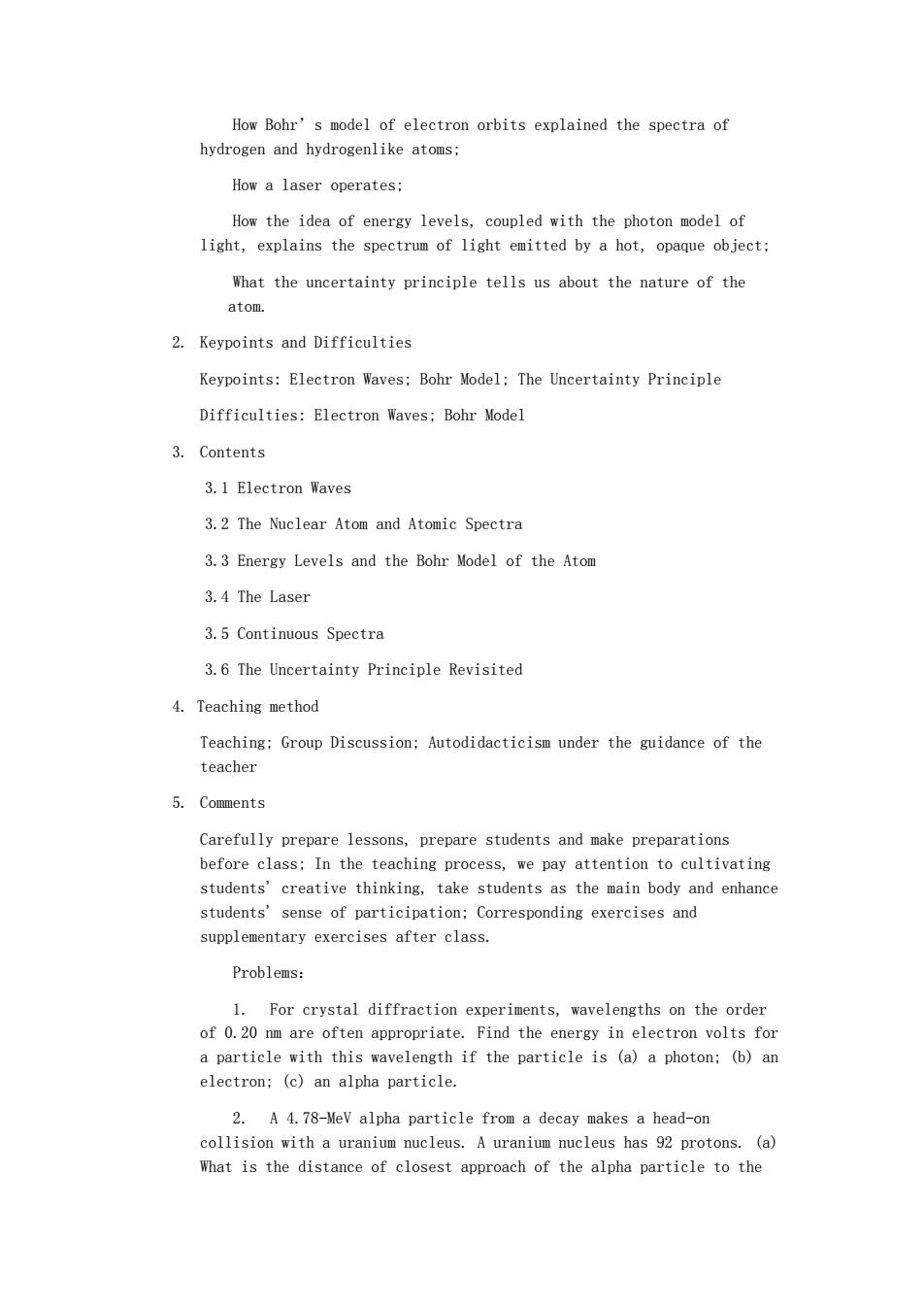正在加载图片...

How Bohr's model of electron orbits explained the spectra of hydrogen and hydrogenlike atoms How a laser operates: How the idea of energy levels,coupled with the photon model of light,explains the spectrum of light emitted by a hot,opaque object What the uncertainty principle tells us about the nature of the atom 2.Keypoints and Difficulties Keypoints:Electron Waves:Bohr Model:The Uncertainty Principle Difficulties:Electron Waves:Bohr Model 3.Contents 3.1 Electron Waves 3.2 The Nuclear Atom and Atomic Spectra 3.3 Energy Levels and the Bohr Model of the Atom 3.4 The Laser 3.5 Continuous Spectra 3.6 The Uncertainty Principle revisited 4.Teaching metho Teaching:Group Discussion:Autodidacticism under the guidance of the teacher 5.Comments Carefully prepare lessons,prepare students and make preparations before class:In the teaching process,we pay attention to cultivating students'creative thinking,take students as the main body and enhance students sense of participation:Corresponding exercises and supplementary exercises after class. Problems: 1.For crystal diffraction experiments,wavelengths on the order of 0.20 nm are often appropriate.Find the energy in electron volts for a particle with this wavelength if the particle is (a)a photon:(b)an electron:(c)an alpha particle. 2.A 4.78-MeV alpha particle from a decay makes a head-on collision with a uranium nucleus.A uranium nucleus has 92 protons.(a) What is the distance of closest approach of the alpha particle to the How Bohr’s model of electron orbits explained the spectra of hydrogen and hydrogenlike atoms; How a laser operates; How the idea of energy levels, coupled with the photon model of light, explains the spectrum of light emitted by a hot, opaque object; What the uncertainty principle tells us about the nature of the atom. 2. Keypoints and Difficulties Keypoints: Electron Waves; Bohr Model; The Uncertainty Principle Difficulties: Electron Waves; Bohr Model 3. Contents 3.1 Electron Waves 3.2 The Nuclear Atom and Atomic Spectra 3.3 Energy Levels and the Bohr Model of the Atom 3.4 The Laser 3.5 Continuous Spectra 3.6 The Uncertainty Principle Revisited 4. Teaching method Teaching; Group Discussion; Autodidacticism under the guidance of the teacher 5. Comments Carefully prepare lessons, prepare students and make preparations before class; In the teaching process, we pay attention to cultivating students' creative thinking, take students as the main body and enhance students' sense of participation; Corresponding exercises and supplementary exercises after class. Problems: 1. For crystal diffraction experiments, wavelengths on the order of 0.20 nm are often appropriate. Find the energy in electron volts for a particle with this wavelength if the particle is (a) a photon; (b) an electron; (c) an alpha particle. 2. A 4.78-MeV alpha particle from a decay makes a head-on collision with a uranium nucleus. A uranium nucleus has 92 protons. (a) What is the distance of closest approach of the alpha particle to the